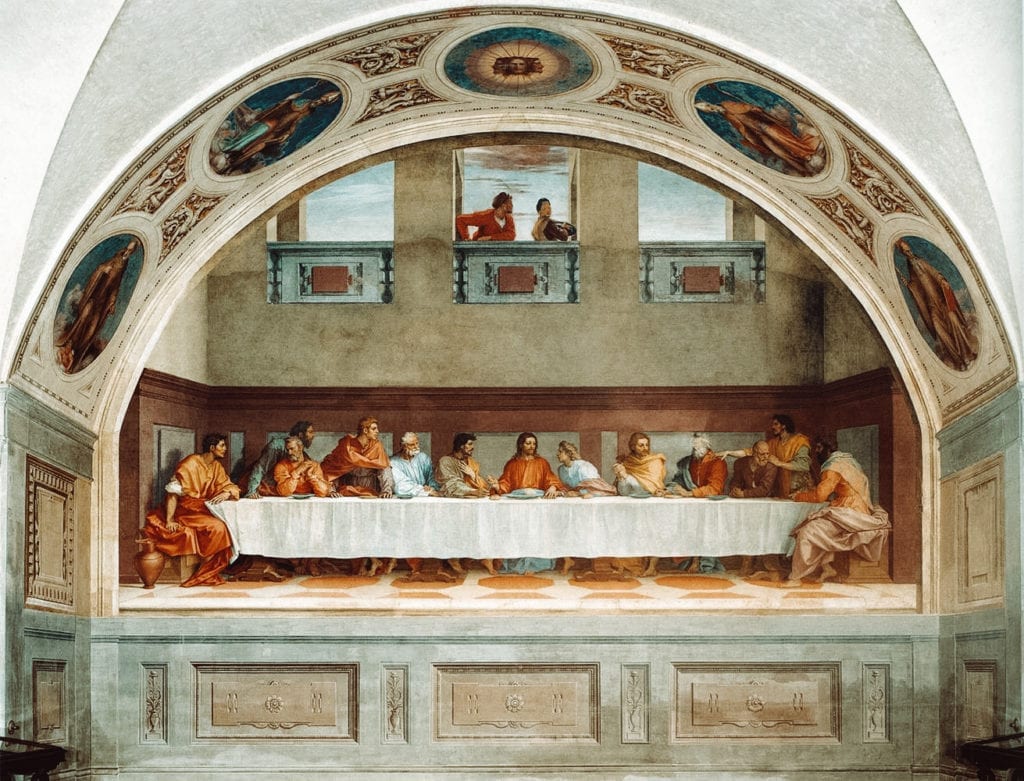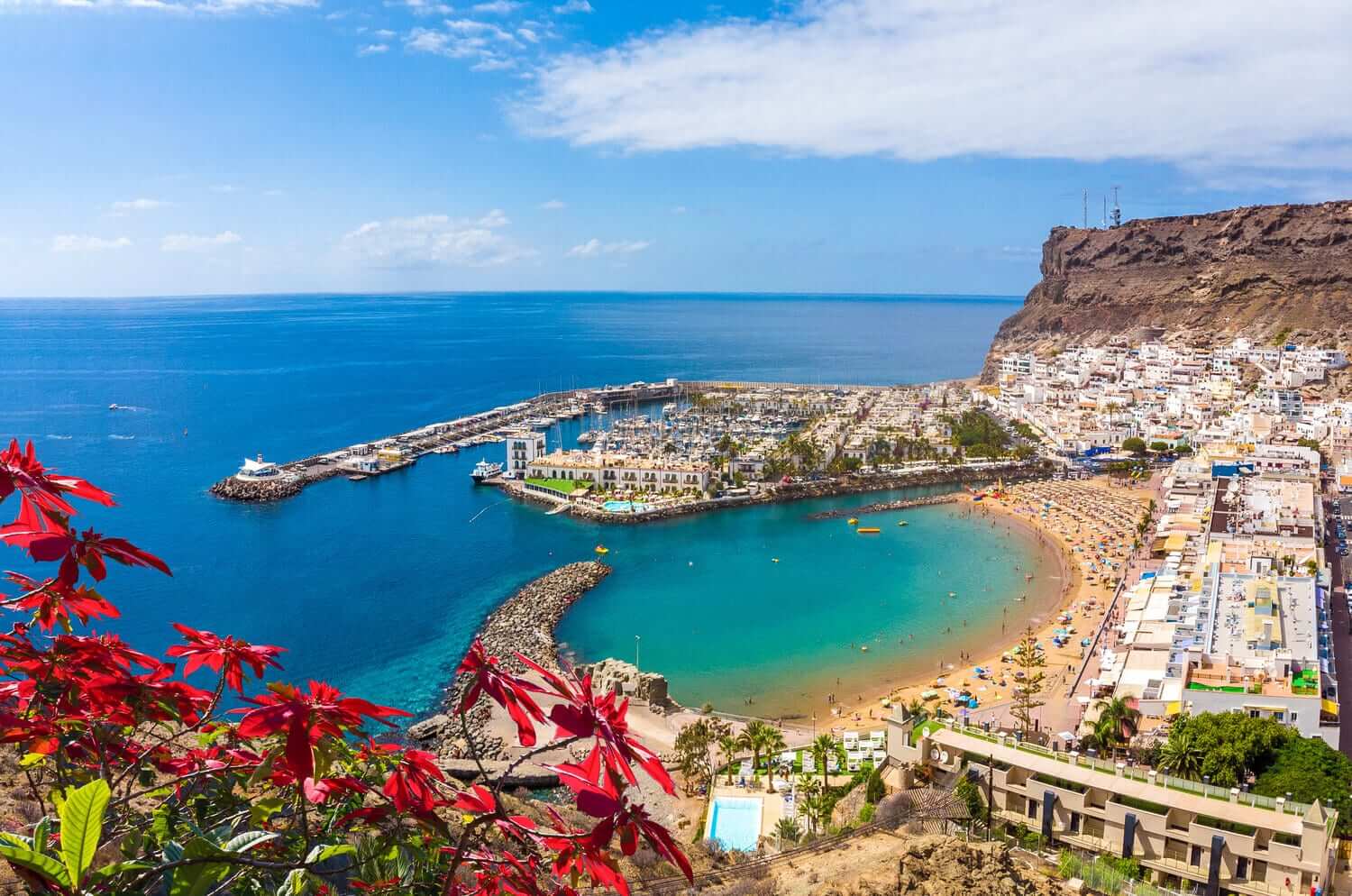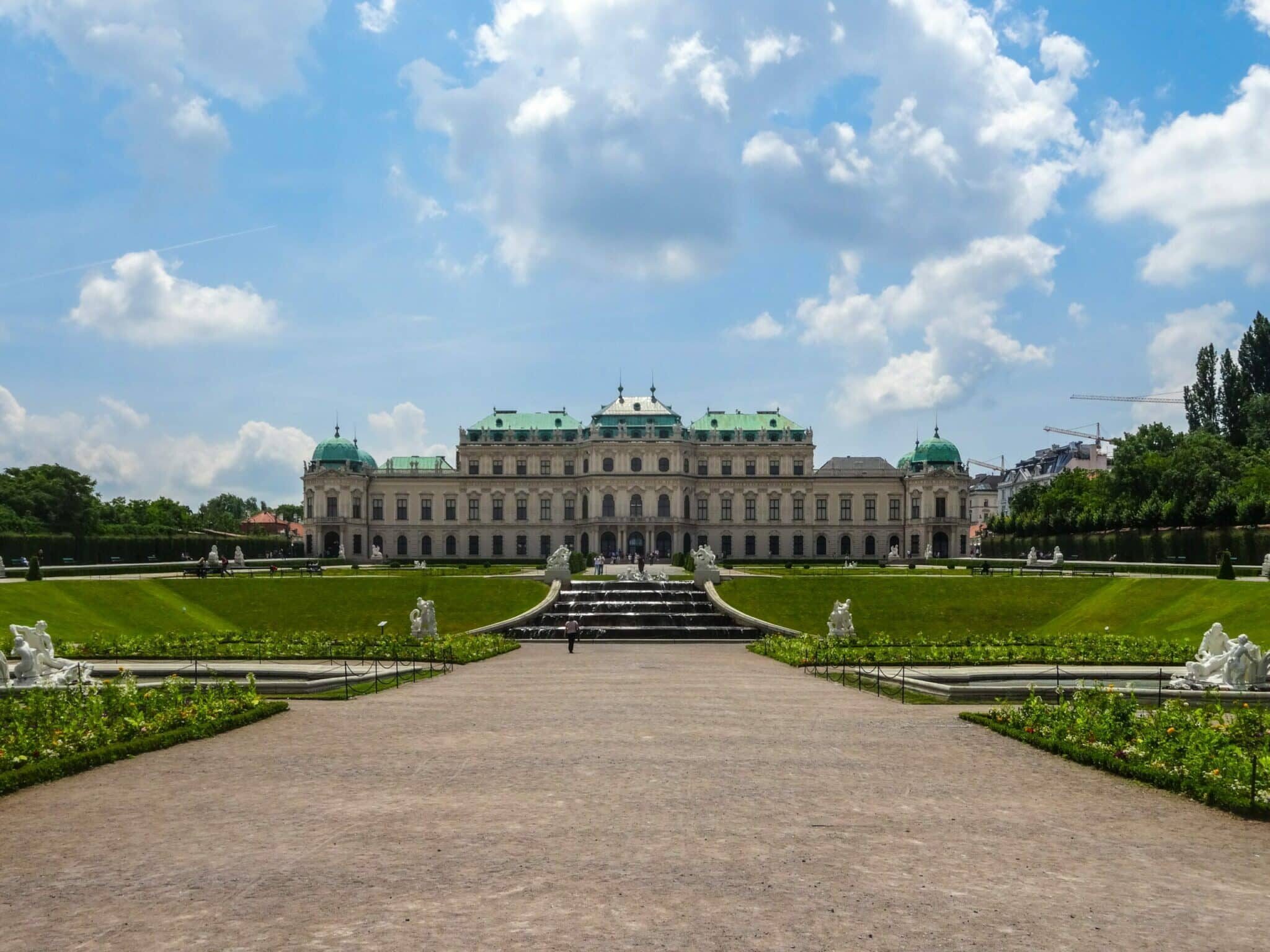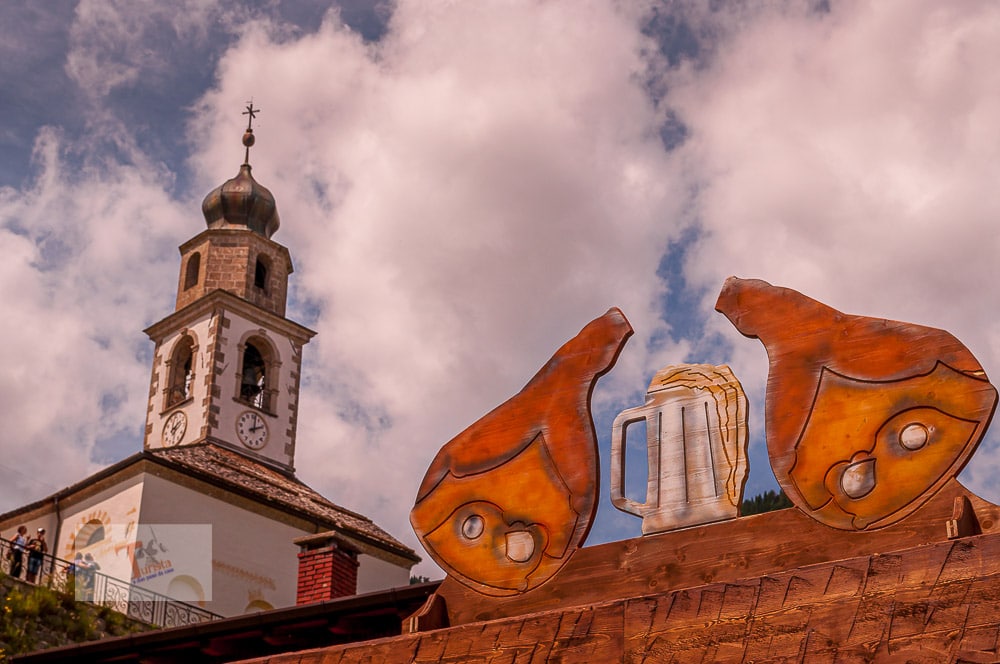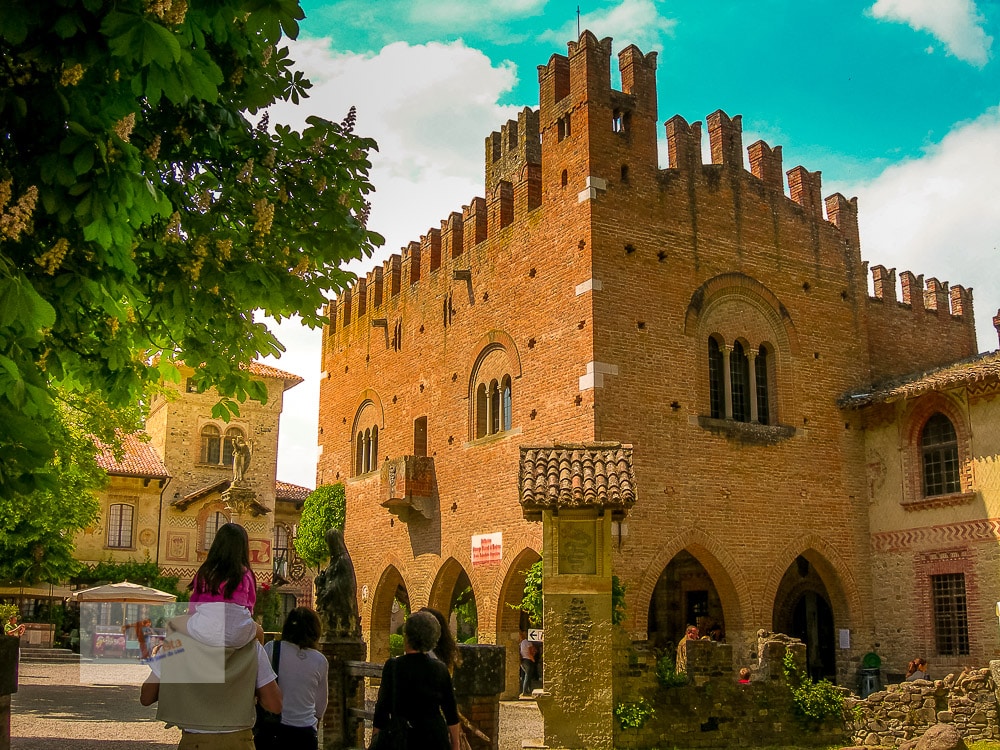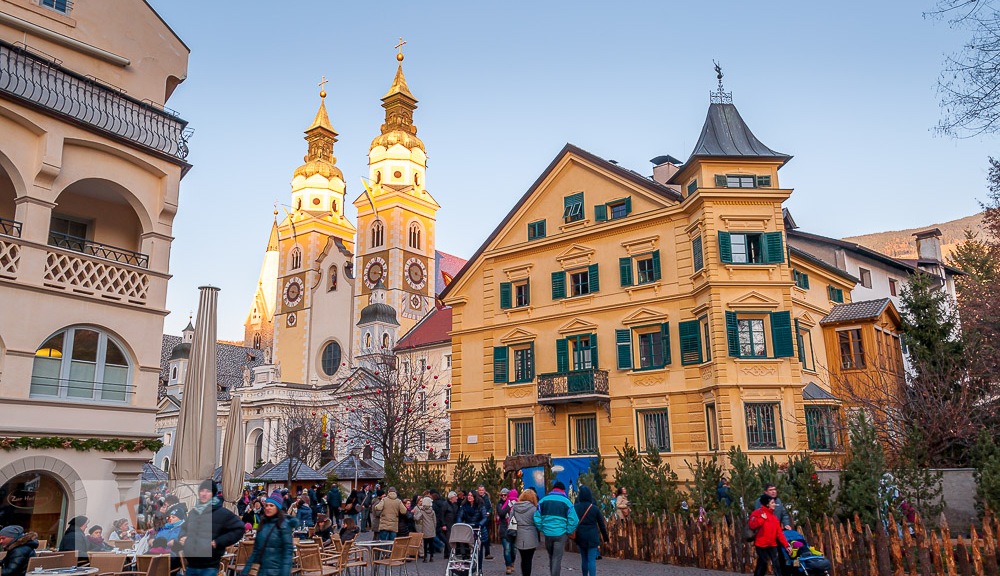Cenacolo di Sant’Apollonia 🖼
The Cenacolo is part of the Sant’Apollonia Benedictine monastery, Florence’s largest female monastery, which was established in 1339. Andrea del Castagno frescoed The Last Supper on an entire wall. The Last Supper fresco covers the entire lower half of the wall: the scene takes place in a lavishly decorated setting, with every architectural detail meticulously attended to. The strict perspective method is accentuated by the geometric effect of the floor and ceiling lines. The Resurrection, Crucifixion, and Deposition in the Sepulcher are depicted above. This upper section was removed in 1953 for conservation purposes, and the sinopias (preparatory drawings) were discovered, which are now displayed on the room’s opposite wall. A frescoed lunette (and its sinopia) with the Christ in piety among the angels, a Crucifixion, and the sinopia of the Vision of San Girolamo between the Saints Paola and Eustachio are among the other works by Andrea del Castagno on display. A Crucifix attributed to Baccio da Montelupo hangs on the room’s south wall. In the antirefectory, other fifteenth-century works from the former monastery are on display.
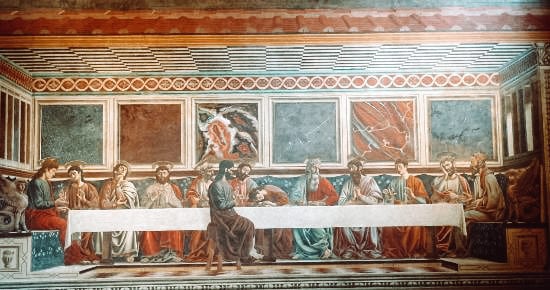
Museo del Cenacolo di Andrea del Sarto 🖼
The Cenacolo is a large fresco by Andrea del Sarto (525 x 871 cm) that dates from about 1511-1527 and is housed in the Andrea del Sarto Museum near the church of San Salvi in Florence. Between 1520 and 1525, the majority of the work was completed. The commission began in 1511 when Vallombrosan abbot Ilario Panichi commissioned the then-young artist and paid him the first installments. Initially, the artist painted the under-arch with the assistance of Andrea di Cosimo Feltrini for the grotesques and most likely a Franciabigio workshop colleague for the figures of the saint. The monastery became female in 1534, and a strict enclosure was implemented, essentially making the work invisible until it was suppressed. Several copies, including those by Ridolfo del Ghirlandaio in Santa Maria degli Angeli and Alessandro Allori in Carmine, were found. The color is vibrant, but the tones chosen are not the primary ones associated with the fifteenth-century tradition (reds, blues, intense yellows), but rather half-tones that evoke a faint screeching: violet, greenish, orange, turquoise, and so on.

Cenacolo di Fuligno 🖼
The Cenacolo was the monumental refectory of Beata Angelina da Foligno’s Franciscan tertiary women’s convent, which was built at the beginning of the fourteenth century and then renovated around 1430. It has been used as a museum since the nineteenth century and is adorned with a fifteenth-century fresco attributed to Pietro Perugino depicting the Last Supper with the Oration of Christ in the Garden in the background. The Egyptian Museum opened in 1855, the Etruscan Museum on March 12, 1871, and the Feroni collection in 1894. The damaged works of art were deposited after the flood of 1966, and the museum reopened in 1990, putting together frescoes by Bicci di Lorenzo (around 1430) from other rooms of the ancient convent of Fuligno, as well as a wooden crucifix by Benedetto da Maiano, which has now been moved to the adjacent former convent. It now houses the Crucifixion and fourteenth-sixteenth century paintings, evidence of Perugianism’s spread in Tuscany and Italy, in addition to Valerio Marucelli’s Assumption of the Virgin, which was once on the high altar of the church of Sant’Onofrio.
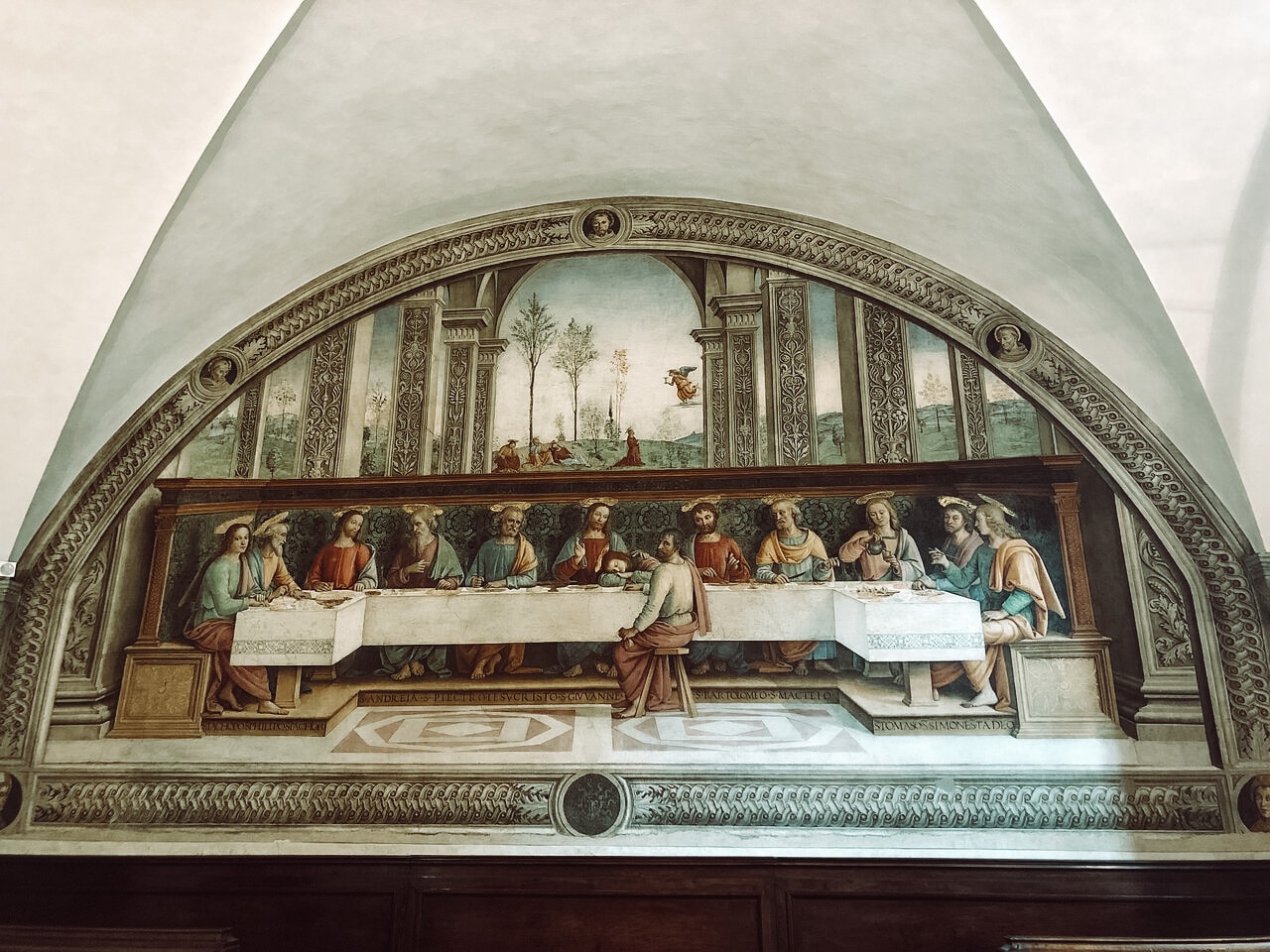
Cenacolo del Ghirlandaio 🖼
Within the Ognissanti Museum is the Cenacolo del Ghirlandaio, a work by Domenico Ghirlandaio, born Domenico Bigordi. It is probably the greatest work of the Renaissance artist, measuring 8.10 meters by 4 meters and completed about 1480. Domenico Ghirlandaio stood out among Florentine artists for his exceptional talent as a painter of Florentine life at the time. Domenico Ghirlandaio painted a number of frescoes that have survived to this day, forming a diverse stylistic repertoire. Ghirlandaio’s painting, despite being uncommitted, demonstrates an exceptional imagination and casual mastery of means in order to make his own the experiences of Florentine study, as demonstrated by the great frescoes that make up the Cenacle of Ghirlandaio in the Museum of Ognissanti; where, among other things, several scenes from Santa Fina’s life are depicted Gregory’s Apparition to Santa Fina and Santa Fina’s Funeral Other Ghirlandaio works can be seen in the Church of Ognissanti, which is close to the Cenacle, including two works commissioned by the Florentine Vespucci family, San Girolamo and the Young Madonna della Misericordia.

